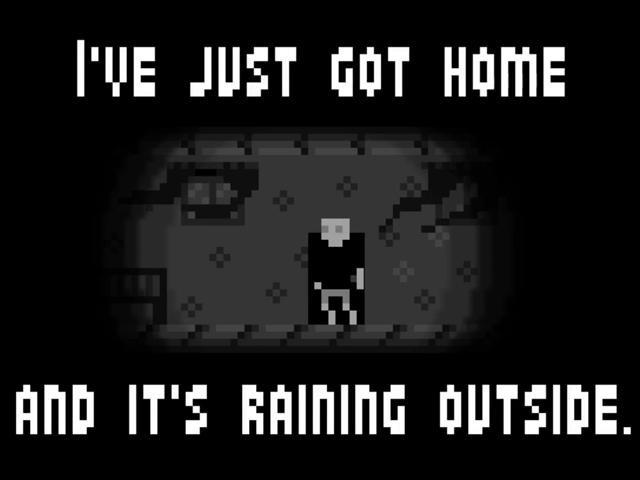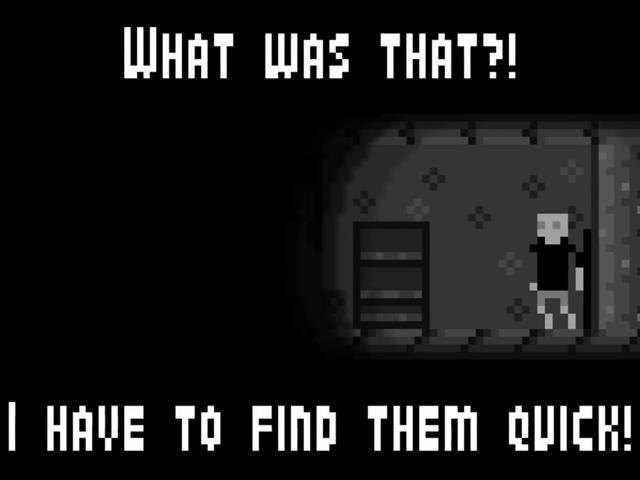Pinoy teen creates pixel art horror game 'Going Home'
It’s probably accurate to say that many serious gamers have, at several points in their lives, fantasized about creating their own video games. So what stops most from making their own Resident Evils and Super Marios?
Well, let’s just say fear could be at the very heart of it. With so many different components to consider, from assets creation to coding, the reality of developing your own video game can be extremely intimidating – especially if you’re new to the whole process.
That didn’t discourage Brandon Blanker Lim-it, though. At just 19 years old, this Pinoy high school graduate already has two games under his belt. The second one, a creepy horror adventure called “Going Home,” was only recently launched on Google Play.

Published by Gigadrill Games, indie title “Going Home” is an atmospheric experience featuring wonderful pixel art, brain-busting puzzles, and genuinely disturbing scenarios. It tells the tale of a young man who comes home to find his house enveloped in darkness, and his wife and child missing. Armed with nothing more than his wits and a dying flashlight, he must unravel the mystery behind the nameless terror now haunting his family. It calls to mind classic adventure games such as “Day of the Tentacle,” but with controls simplified for mobile devices.
“Going Home” is Brandon’s first “very big” project. Did we mention he developed the entire game – including its coding, art, and music – all by himself?
From inspiration to hard work
Like many youths today, Brandon watched YouTube sensations such as PewDiePie scream themselves silly playing indie horror games. While watching such videos is little more than mindless entertainment for most, for Brandon, it would prove an important stepping stone in the journey that would eventually lead to “Going Home.” After all, he describes “Going Home” as an “adventure survival horror game” – the type of game that inspired him to enter the world of indie game development in the first place.
Brandon also counts the thriller genre, with its focus on story and elements such as plot twists, as his inspiration for “Going Home.”
But inspiration can only take you so far. To build a game from the ground up, you need to immerse yourself in various disciplines, from computer programming to the operation of game creation tools.
So Brandon taught himself how to do all these things.
“I learned everything about programming as a hobby way back when I was in high school; it was pure self-learn. But it’s not that difficult since we are now in the modern technology time. I started with Game Maker, a beginner tool for programming and game development. I learned from watching YouTube videos.”

Gamer Maker was useful when his laptop’s operating system was Windows. But after migrating to Lunix-based Distro, he was forced to find a new way to create games. He therefore had to learn the Lua programming language, and Love2D (or LOVE), a framework used to make 2D games in Lua.
Training himself in Lua and Love2d was slightly more challenging.
“There is no GUI (graphical user interface) in the framework Love2D,” he explained. “All is pure code.”
He added: “I learned by examining source code from other people, using the API (application program interface), asking questions in the forums.”
It took Brandon at least 2 weeks to study and master Lua and Love2D. He acknowledged that learning a computer language can be terrifying at first:
“Learning (a programming language) is very intimidating. I thought college level math would be a requirement, but it’s not.”
Ultimately, the challenge of “learning something advanced beyond your academic stage” convinced him to continue learning by himself.

As stated earlier, Brandon was also responsible for “Going Home’s” art and music.
“I am a big fan of pixel art, and it is very convenient for my ‘first project’ since pixel art is small in size, and easier than vector images.”
He used Aseprite as his pixel art tool and sprite editor.
To create “Going Home’s” soundtrack, Brandon used a free music composition and notation software:
“I used Musescore to notate the piano and violin part. I also play the piano and violin, so I kind of have the gist of composing.”
Of course, “Going Home” wouldn’t be a complete game without the puzzles. It’s great Brandon grew up playing some legendary Capcom and Konami titles on the PlayStation.
“The puzzles are gestures to the classic puzzles you encounter in classic survival horror games like ‘Resident Evil’ and ‘Silent Hill.’ No guide. Just pure logic!”
Getting the knack of using all these diverse tools was the toughest part of developing “Going Home.”
“The greatest challenge I faced while developing the game was that the tools I used were new to me: the programming language, the code editor, pixel art software, music notation, even the operating system,” he admitted.
All in all, “Going Home” took around 6 months to develop. Were it not for busy days and the occasional bout of laziness, he believes he could have finished the project in 4 months.

A future of opportunities
Brandon isn’t playing around; “Going Home” is the beginning of what could one day evolve into a career in video game development.
This coming year, he hopes to enroll in a university and take up a degree in Computer Science. Failing that, Information Technology would be a great alternative.
“I plan to get and finish a degree in college while still making indie games on the run,” he said. “I plan on making more games. I’m even planning a sequel to ‘Going Home.’ I do believe I have a shot at video game development. It is really my passion to convey and portray stories using interactive mediums like the video game. Like how an author convinces its readers, so too will I code to reach more and more people.”
Brandon’ family is not yet aware of his unique hobby. They do know he’s good with computers, so he believes they’ll support him and his game development dreams.
Of course, Brandon is happy to accept help wherever it is available.
“I am a member of the FB group for indie developers in the Philippines,” he said. Here, he met JC Claridad, the Gigadrill Games founder and “Finger VS Bugs” developer, after winning a contest.
“After I won the Super Fun Jam with my game ‘Limbo... Basically!,’ Sir (JC Claridad) contacted me and asked me if I planned to release and port my games to Android,” Brandon explained. “During that time, my only problem was the Google Play Developer License, so I quickly agreed to team up with him.”
In addition to publishing “Going Home,” Gigadrill Games helps market the game.
Brandon has a special message for those aspiring to develop their own video games:
“Making games is not difficult when you really want to make them. Start from small projects, then once you hone and master your tools, make a big project. Then, change your tool, learn something new. Always be in the edge between what you are used to and what you are still not used to. Also, there’s no miracle in codes, there’s no code that will miraculously perform something different than what you coded. It all comes down to logic.”
“Going Home” can be downloaded for free for Android devices. Check it out on the Google Play Store. There is also a PC version, which you can download here. — TJD/KVD, GMA News




